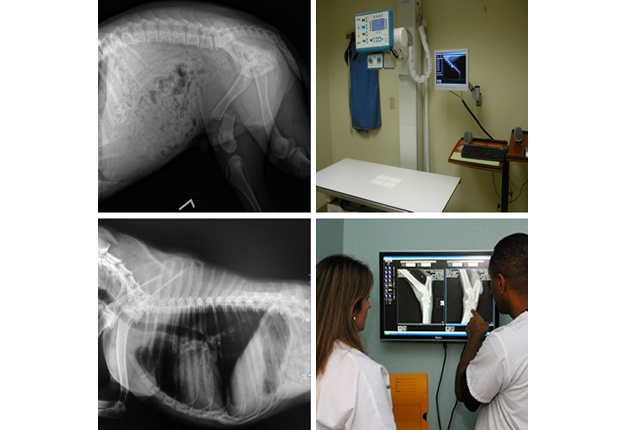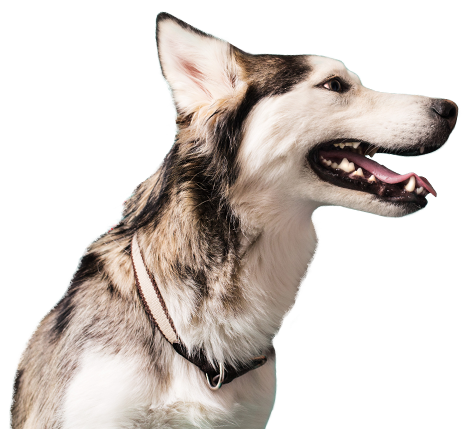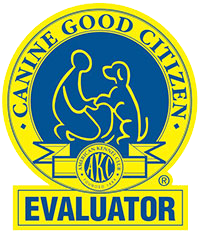
I remember the first x-ray machine I was exposed to (forgive the pun!). I was fresh out of veterinary school working in South Georgia. My boss and I were taking a radiograph of a dog. The machine looked like a rusted piece of farm equipment. The image quality was so bad I’m not sure what I could make out anything other than a broken bone. We would take the film and process it in a dark room by dipping it into tanks of fixer and developer. Twenty minutes later I could look at the x-ray. That was in the ’80s.
As time passed, the dark room here at my hospital was replaced with an automatic developer in the ’90s. That was high tech back then — we had our radiographs ready in 10 minutes or less. The quality of the film was not so great, but our x-ray machine was state of the art.
About 6 years ago, I made the leap to have my x-ray machine retro-fitted to accommodate digital x-ray. I believe this was one of the best choices I have made in my career.
The incredible detail seen in these x-rays enables the diagnosis of conditions never dreamed of before. A radiologist is now able to see changes in delicate tissue. The image may be enlarged, flipped, magnified, brightened and emailed. Areas may be measured and compared to recent x-rays, such as with a bladder stone to see if the size has changed. When my technicians take the views, they send the images to the computer in the exam room. I can talk to you about your pet’s x-rays in just minutes.
Radiology is a specialty. As your pet’s doctor, I can absolutely recognize many problems radiographically, but I rely on radiologists for consultation. This is particularly true for thoracic views and when large areas of the body are captured on film. It takes time to properly read films and we are able to email digital x-rays to a specialist and have results in 24 hours. 4 hours if needed STAT. You certainly wouldn’t want your physician to read your mammograms, right?
When Should we Request an X-Ray?
The decision to take an x-ray is often dictated by the obvious reason to see something. A dog that swallowed a coin, bladder stones in the bladder, or a broken bone are all reasons an x-ray would be needed.
What about all the other inferences to be drawn from a radiograph? Did you know that an enlarged liver could be caused by obesity, or cancer or adrenal disease? An enlarged spleen, common in large breed dogs, may be a tumor. Early removal will save the dog’s life. More often, arthritis is seen on x-ray before owners could notice it in their own pet. Early diagnosis and treatment may add years of much improved quality of life.
We certainly will always rely on blood work to give us a picture of an animal’s health, of its organ function and blood levels, but there is so much that blood work can not do that X-rays can.
Recently, I x-rayed all of my pets. They range from 3 – 8 years of age. I x-rayed their chest and abdomen and hips and knees. The radiologist found something notable on each of their x-rays.
For my two pets with early osteoarthritis, I have adjusted medication to prevent worsening of this condition. I am grateful that I have this knowledge of what is really happening to them. We must always remember that our pets are aging 7 times faster than we are. It is not unusual to find areas of degenerative joint disease in young dogs.
Unfortunately, my standard poodle was diagnosed with an enlarged heart. She is not coughing, not breathing hard and looks like she’s perfect. But she’s not. An echocardiogram will be done to verify cardiomyopathy. This is a very serious condition of the heart. Patients usually present in heart failure with this condition. They are diagnosed, put on medication and usually only live a few months. Having found this out early, I will institute oral medication that will likely prolong her life, months if not years.
Nobody likes to hear that there is something wrong with their pet’s health, but I have strength in the knowledge that I can start treatment now. I don’t want to be caught off guard with a terrible prognosis in the future that I can do little to change.
I am recommending that clients consider full body x-rays in addition to annual blood work of their dogs and cats. At what age should it be done? I think that’s debatable, but around 5-6 years might be a good time to start. The radiologist can compare radiographs from the previous year to see if there are noticeable changes. I think back to several cases, where the pet presented with abdominal tumor 6 months after an exam. We found it on x-ray. If I had only done x-rays 6 months earlier, before the belly enlarged, maybe I could have found the mass and treated the pet successfully with surgery.
Having the knowledge of what is going on with organs, bones, heart, and lungs is so important. These are often can not be truly accessed properly on exam or through blood analysis. Making my digital machine available to my clients is very important to me. Please consider radiographs as part as your normal geriatric check up. Having knowledge of your pet’s medical condition gives you the power to change the future… for the better.

Contact Us
Regular check ups with a veterinarian are important for your pet's health. Contact us today to schedule your next appointment.





